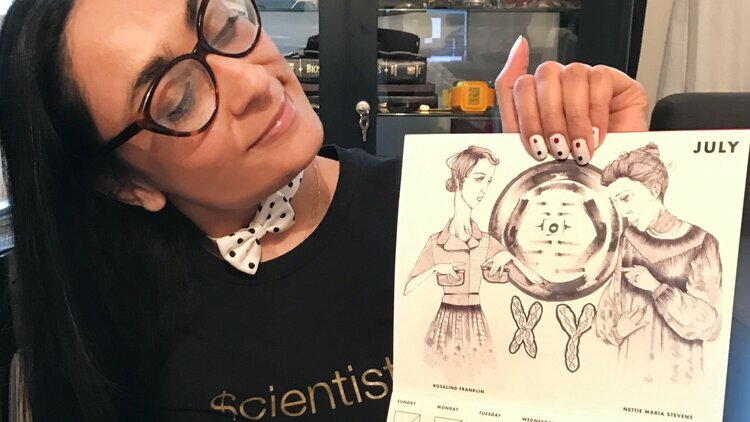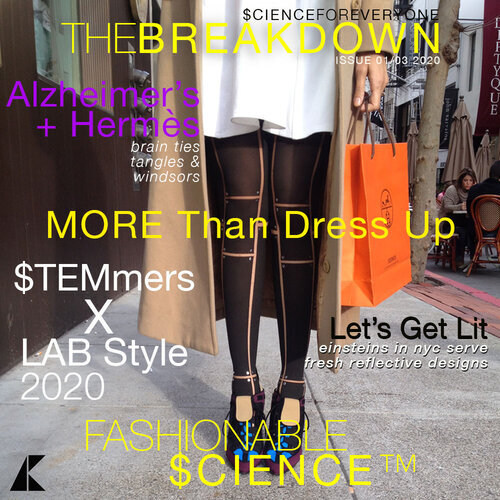Rosalind Franklin Keeps It 100
July 25th, 2020 marks Rosalind Franklin’s 100th birthday. The chemist passed away at 37 from ovarian cancer, but not before she took part in the controversial discovery of DNA’s double helical structure. This topic has been debated since Watson published his book talking trash about her. Dr. Franklin’s family confirmed they never thought about her missing out on the Nobel Prize for the discovery until that book. My introduction to The nerdicus scandal was from The Double Helix by james Watson and The Dark Lady of DNA by brenda Maddox. These books helped to form my early views on Dr. Franklin, but over the years my growth in life and as a scientist have altered my views on the topic .
HER EXPERIENCE IS AN ALARM FOR COLLABORATION
There were several times that Franklin’s antagonists (her boss, colleague, and the Watson-Crick team) were willing to be cool. Instead of compromising her high etiquette standards, Rosalind wanted nothing to do with researchers she found unrefined. This would have been a great multidisciplinary collaboration because of the chemistry-biology cross-over. No single person knows everything or is better than anyone else. Learning to work with people who are different presents the valuable opportunity to teach each person a lot about others and advance science a lot faster than solo projects. This is beneficial to all parties because great work is produced efficiently and everyone gets credit.
“Cool” = They realized that they were jackasses and offered to knock it off so they can continue to work on an important project.
AGREE ABOUT AUTHORSHIP BEFORE AGREEING TO ASSIGNED WORK
When no compromise was happening in a growing hostile lab environment, Franklin agreed to focus on only her part of the work. Negotiating publishing terms can be difficult for students and trainees because more likely than not, they have no choice but to do the work. Needing academic advisors for references and graduation prevents trainees from speaking up about authorship issues because of retaliation- lab PIs and advisors can choose to omit whomever they want. The Watson-Crick team and Franklin’s boss reneged on their agreement and used her data without her consent. They also conspired to publish after she was out of the picture as to avoid opposition. This is a great example of getting all parties to sign a contract on all work that will be done on a project. Again, students don’t have the upper hand here, so it is near impossible for them to do this without set academic guidelines.
YOU CAN BE UNLIKED FOR BEING A WOMAN OR FOR YOUR PERSONALITY… MAYBE BOTH
Watson definitely made derogatory comments about Franklin being a woman -to her face, behind her back, and in his book. ‘She wouldn’t look bad with some make-up’ is equivalent to asking one gender to smile, but not the other. Outside of gender is being a regular snob, and nobody likes that. From what Maddox describes, Dr. Franklin seemed to be a real top drawer elitist. She went to the best schools and came from a family of wealth, which was revealed through her attitude toward some ‘undesirable’ K-12 classmates. Comparing stories or asking a trusted person for feedback helps to clarify the situation before taking one for the other.
Scene from Auntie Mame: Patrick introduces his high society girlfriend to his glob-trotting, down-to-earth Aunt Mame.
Disliking someone doesn’t give anyone the right to commit scholarly misconduct
If the person did the work, their name should be cited on the work. Scientific publishing is of course the main method of disseminating and providing a record of findings. Franklin wasn’t omitted from her research like were many women and non-White people in the 1950’s. But, she was made to look incompetent by publishing her work as a follow-up to the Watson-Crick Model instead of highlighting the fact that her Photograph 51 was used to build that model. Scholarly misconduct with authorship still occurs today because better guidelines have not been established and PIs are not held accountable by institutions or scientific journals.
She probably would not have liked me
Dr. Franklin made a comment about her dislike of ‘beer-drinkers’ and their ‘culture’. She apparently was a dinner party and food snobbery type of scientist. Unfortunately, her lab colleagues liked grabbing hoppy pints and talking science. Rosalind probably would not have gone for a stein with Guinness-toting moi. Mixing it up can open up new pathways of communication and collaboration. This is why every nerdicus conference has social mixers with drinks.
BOTTOM LINE: WHATEVER HER PERSONAL INCLINATIONS WERE, DR. ROSALIND FRANKLIN’S METICULOUSNESS AS A CRYSTALLOGRAPHER GAVE THE WORLD THE IMAGE OF DNA’S LONG-AWAITED STRUCTURAL CONFIGURATION. TECHNICALLY, IT WAS QUITE DIFFICULT TO PRODUCE. THE CREATIVITY IT TOOK TO COMPLETE THE PUZZLE WOULD HAVE BENEFITTED FROM WORKING WITH OTHERS. IF SHE MADE IT TO 100, THEN I IMAGINE SHE WOULD HAVE CELEBRATED SOMEWHERE IN FRANCE WITH HER CLOSEST FRIENDS AT A DINNER PARTY WEARING HER CHICEST CLOTHES.
“QUITE DIFFICULT” = HELLA HARD
The Breakdown Mag
Issue S/01 2020 Fashionable $cience















